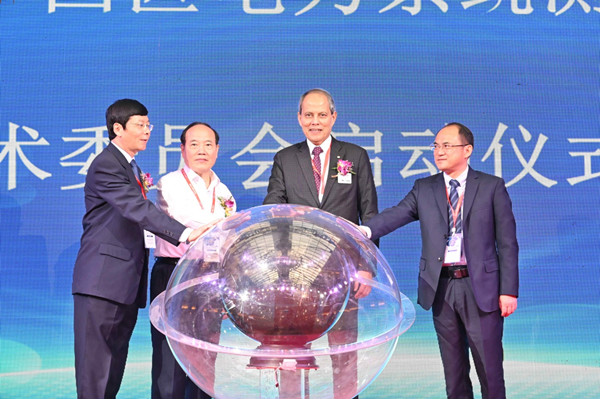即可将网页分享至朋友圈

The Power System Instrumentation and Measurements Committee, a standing committee of IEEE PES China, is established at the IEEE PES Innovative Smart Grid Technologies Asia 2019 on May 22 in Chengdu, capital of southwest China's Sichuan province.
IEEE PES Innovative Smart Grid Technologies Asia 2019, a top-level international academic conference in the field of smart grids, is being held from May 21 to 24 in Chengdu, capital of southwest China's Sichuan province.
The conference is hosted by the Institute of Electrical and Electronics Engineers (IEEE) and Power and Energy Society (PES). It is also co-organized by the University of Electronic Science and Technology of China (UESTC) and State Grid Sichuan Electric Power Company.
More than 800 well-known experts and scholars in the fields of power and energy from 30 countries including Germany, the United States, Denmark, Belgium, and India have gathered at the conference, which is themed around "Smart Grid Links Future," to exchange ideas and share achievements.
A total of 330 academic reports have been made during the conference by experts and scholars, including those by Saifur Rahman, president of IEEE Power and Energy Society, and Yilu Liu, Member of the National Academy of Engineering.
The Power System Instrumentation and Measurements Committee, a standing committee of IEEE PES China, was established at the opening ceremony of the conference on May 22.
"As researchers in the field of power, it is incumbent upon us to explore new theories, technologies, and methods to cope with the development challenges of today's power systems," said Cheng Shijie, an academician of the Chinese Academy of Sciences. He added that he is pleased that the conference has attracted such a large number of well-known scholars from home and abroad to study the future development of smart grids.
Cheng said that China has accumulated rich operational and research experience in the intensive development and utilization of renewable energy. At the same time, the country has great demand for large-capacity and long-distance power transmission due to the reverse distribution of its energy resources and economic development areas.
Sichuan is a major participant in China's West-East Power Transmission Project. There are three ultra-high-voltage (UHV) transmission lines to deliver hydropower from Sichuan province to Shanghai, Jiangsu, and Zhejiang, according to Cheng.
By the end of 2018, the installed capacity of power generation in Sichuan province reached 98.3 million kilowatts, of which hydropower and new energy accounted for more than 84 percent, the highest proportion among the provinces in China, according to Shi Junjie, chief engineer of State Grid Sichuan Electric Power Company, which is responsible for the electricity supply of over 95 percent of the province's population.
Zong Yong, president of UESTC, said the university has been focusing on new directions such as renewable energy generation and smart energy. It has laid a strong research foundation in smart grid information technology, energy conversion materials and devices, renewable energy control and accommodation, and large scale power network analysis and control.
Huang Qi, general chair of the conference and a professor at UESTC, said that the university is willing to develop new technologies in the smart grid field through cooperation with experts from around the world, as well as promote advanced technologies and ideas to the world.
The university has participated in the construction of several smart cities at home and abroad, providing them with smart energy solutions, he said.
报道链接:http://www.chinadaily.com.cn/regional/2019-05/23/content_37473137.htm
编辑:杨棋凌 / 审核:罗莎 / 发布:罗莎


